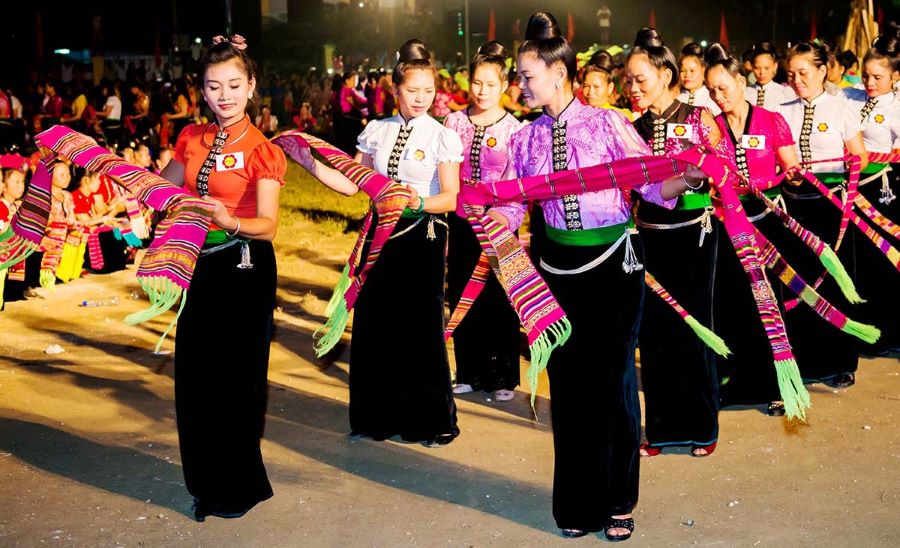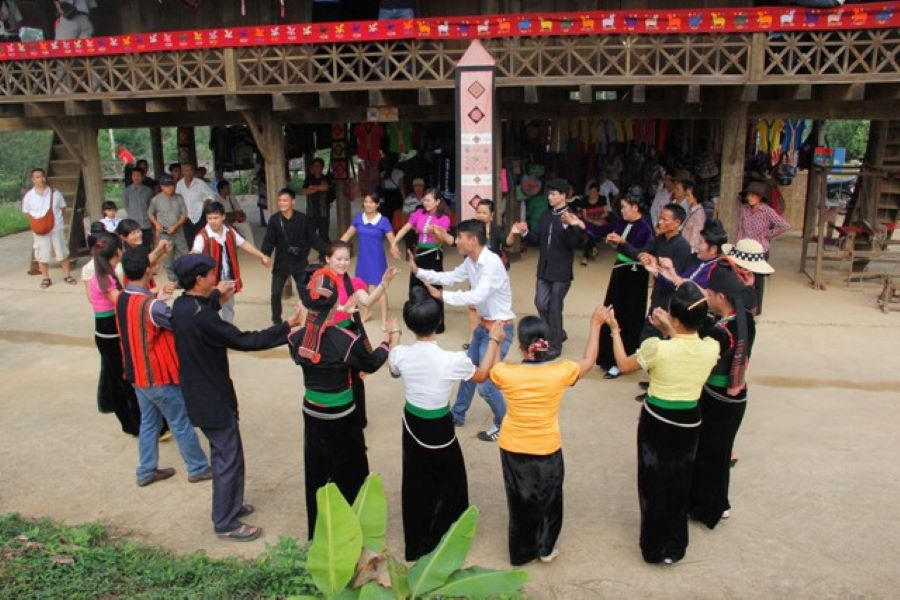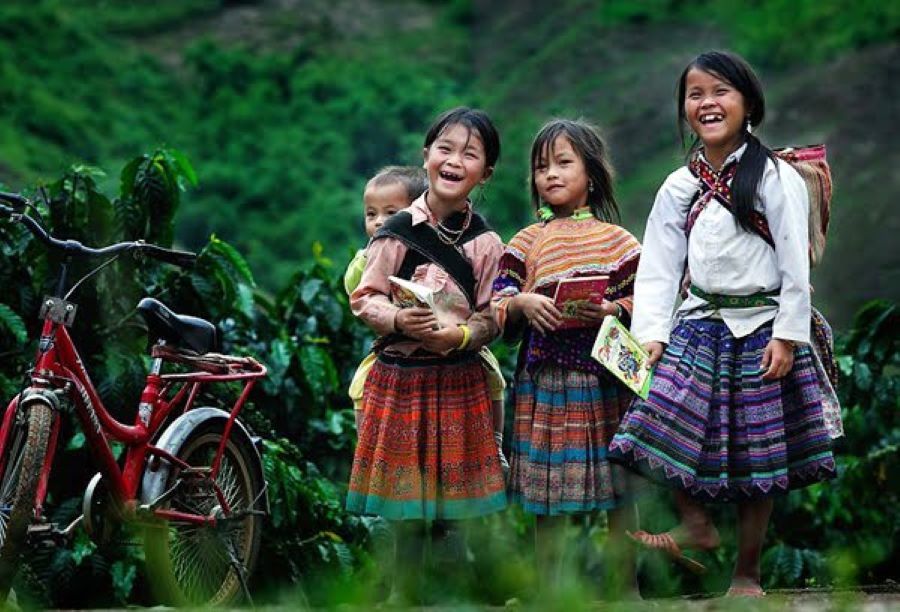Ethnic Group Thai
Ethnic Thai People in Northwestern Vietnam possess a rich heritage-discover their vibrant traditions, enduring culture and deep-rooted history shaped by community, resilience and harmony with nature.
Quick Peek: The Warm World of Vietnam’s Ethnic Thai People
When international travelers think of Vietnam, vibrant cities like Hanoi and Ho Chi Minh City often come to mind. But for those seeking cultural depth and breathtaking landscapes, Vietnam tours that explore the remote regions of the northwest offer a once-in-a-lifetime experience. Travel to Northern Vietnam is more than just a scenic journey-it’s a cultural expedition through some of the most diverse and welcoming communities in Southeast Asia.
We’ve spent time exploring the highlands and river valleys of Vietnam’s north, connecting with local families, riding mountain passes, and navigating the lively chaos of ethnic markets. Our journey gave us insight into the Ethnics of Vietnam, especially the fascinating Ethnic Thai People, who form a significant cultural thread in this vibrant tapestry.
Let us take you through what we’ve learned-both from experience and trusted sources-about these remarkable communities.
Origins and History of the Ethnic Thai People
The Ethnic Thai People are believed to have migrated from southern China to Vietnam centuries ago. They settled mainly in northwestern provinces such as Dien Bien, Son La and Lai Chau. As part of the Tai-Kadai language family, they share deep cultural roots with groups in Laos and Thailand. Over time they adapted to mountain life and formed strong, organized communities.
They chose fertile valleys along rivers like the Da and Ma to build stilt houses and grow wet rice. Using sophisticated irrigation, they managed water from streams with bamboo pipes and stone channels. These systems still function today in many Thai villages. Unlike the majority Kinh people, they kept unique traditions and social systems. Each village is led by a chief who follows rules passed down through oral history.

Ethnic Thai People celebrate heritage with music, color and joyful mountain traditions.
Furthermore, their resilience shows in how they maintain culture while adjusting to modern life. Much of their past lives on in folk tales and textile patterns. During ceremonies, traditional songs echo across the hills and remind listeners of their rich legacy. Travelers can join guided trips from Hanoi to Mai Chau or Muong Lay starting from 280 USD (approximately 6,600,000 VND). This journey offers rare insight into a living mountain culture.
Population and Geographic Distribution
Today, the Ethnic Thai people rank as the third-largest ethnic group in Vietnam, with over 1.5 million members. Most live in scenic provinces such as Son La, Lai Chau, Dien Bien and Nghe An. These northern regions feature lush hills, layered rice terraces and gentle rivers that inspire every nature lover.
Traditionally, their villages sit on flat land beside rivers or streams. These locations support both rice growing and animal raising. Their houses are crafted from bamboo and wood and raised on stilts for safety from floods and wild animals.
As travelers explore remote corners of Northwestern Vietnam, they often ride through peaceful Thai communities. Locals greet visitors with open hearts and sincere smiles. Frequently, hosts offer hot tea or a fresh meal made from local ingredients.
Moreover, these encounters create lasting memories and offer insight into daily life and tradition. Each stop reveals something new about the region’s rich culture. The genuine warmth of these interactions reflects the deep hospitality of the people.
Every turn along the route brings new scenery and new faces. Therefore, a Northwestern Vietnam Short Motorbike Trip becomes more than an adventure. It transforms into a journey of connection and discovery.
Language and Identity
The Thai language in Vietnam includes two main dialects-Black Thai and White Thai. These names reflect the traditional clothing colors of each subgroup. Both dialects remain widely spoken in daily life across many northern villages.
Although most adults speak fluent Vietnamese, they still use Thai at home and in social gatherings. This maintains strong cultural continuity within communities. Moreover, language acts as more than just a tool for conversation.
It holds deep meaning and connects generations through stories, values and customs. Songs, folktales and wise proverbs keep traditions alive and shared. As a result, the spoken word becomes a bridge between past and present.
In recent years, bilingual education has gained support in schools located in Thai-majority areas. These programs allow children to learn Vietnamese while keeping their mother tongue strong. This approach helps preserve ethnic roots without limiting future opportunities.
Furthermore, learning both languages builds confidence and strengthens cultural pride in young students. It also fosters respect for heritage in an ever-changing society. Through education, the beauty of the language continues to thrive.
Overall, the Ethnic Thai People treat language as a living legacy. It carries not only words but identity, emotion and belonging through every generation.
Traditional Clothing
The traditional clothing of the Thai people tells a cultural story through patterns and colours. Women usually wear black blouses paired with long skirts featuring detailed embroidery. They also don silver jewellery with colourful belts that differ subtly between Black Thai and White Thai communities. Men typically don indigo shirts with loose trousers emphasising cultural simplicity and strength. These outfits appear during festivals weddings and market days with vibrant energy and significance. If you attend a local celebration you will witness clothing as a canvas for pride beauty and values. Furthermore these garments reflect heritage while appealing to younger generations. Additionally many young women now wear updated styles that adapt Thai brocade into wider or slit skirts. This renovation preserves tradition yet offers modern comfort and flair. Moreover clothing becomes a visible sign of identity during communal events. Thus wearing traditional attire enhances respect and understanding of cultural depth. Ultimately the outfit fulfills both aesthetic and social roles within the Thai community. As part of the Ethnics of Vietnam their attire showcases the rich diversity and history that lives on through fabric and form.

Each thread worn by Ethnic Thai People tells a story of mountain life.
Where to Rent Thai Traditional Clothes
- Son La province local rental shops (e.g. in Moc Chau or Son La city) offer modernised Thai costumes from ₫200,000 to ₫500,000 (≈ $8–$20 USD) per set.
- Dang Thu Ha Costumes in Hanoi, specialising in ethnic attire rentals for performances and photos. While exact prices vary they typically charge ₫300,000–₫600,000 (≈ $12–$24 USD).
Traditional Customs and Festivals
Thai culture is full of vibrant customs rooted in agriculture community bonding and ancestor worship. One of the most beloved celebrations is the Xen Ban Xen Muong festival which prays for harvest and harmony.

Xen Ban Xen Muong unites Ethnic Thai People in tradition, dance and prayer.
During these lively events locals perform traditional dances like Xoe using coordinated hand gestures and graceful circle movements. The beat of drums and bamboo instruments fills the air with energy and joy. Kin Pang Then ritual and Xoe dance two traditional cultural practices of Thai ethnic group continue to preserve spiritual and artistic heritage.
Markets also play a vital role in local life and cultural exchange. Among the ethnic minorities markets in northwestern Vietnam Thai communities host some of the most colourful and authentic market scenes. These bustling gatherings go beyond trading goods and include matchmaking story sharing and heritage celebration. Each custom reflects the community’s deep respect for tradition unity and the natural world.
Religion and Spiritual Beliefs
Most Thai people follow a spiritual tradition blending animism and ancestor worship rooted in daily life and seasonal practices. They believe nature spirits household ancestors and village deities must be honored for peace and balance. Every day families perform small rituals to show respect and gratitude to these unseen forces.
In addition shrines found in homes and at village entrances act as sacred spaces for offerings and prayer. Ceremonies often include food incense water and symbolic tokens arranged with care and devotion. These acts maintain harmony with the spirit world and protect the family from misfortune.

Rituals connect Ethnic Thai People to the unseen world of gods and spirits.
Moreover larger communal events mark changes in the agricultural cycle or resolve spiritual imbalances. These gatherings often involve music blessings and shared meals under the guidance of respected elders or shamans.
Some communities have slowly incorporated aspects of Buddhism into their practices. However traditional beliefs still shape moral values and household routines. The balance between old and new forms a unique and enduring spiritual identity.
Visitors to northern regions frequently observe this deep respect woven into daily routines. The religious practices of the Thai community reveal a spiritual lifestyle that brings meaning to every aspect of rural life. It remains a defining part of their cultural heritage.
Agriculture and Economy
Agriculture forms the backbone of economic life in Thai communities where wet-rice cultivation dominates the landscape and daily routine. Families also grow maize cassava and tea while raising livestock to diversify their income sources. In the valleys near Mai Chau we joined locals to plant rice by hand-a sweaty muddy yet rewarding experience. It is in these wide green fields that the spirit of teamwork and unity becomes most visible.
Moreover farming is not only labor but a lifestyle shaped by seasonal rhythms and generations of shared knowledge. Traditional methods remain vital though some villages now blend them with modern tools for efficiency.
In recent years tourism has offered new opportunities for supplemental income. Homestays handicrafts and cultural tours have grown steadily in popularity. With help from Vietnam Travel Maps reaching these quiet and authentic villages has become easier than ever. Supporting these local economies fosters responsible travel and keeps cultural traditions strong.
Family and Social Structure
Thai society remains traditionally patriarchal yet women carry vital roles in managing households finances and family welfare. They often lead daily routines while also contributing to farming markets and child-rearing. Homes usually include several generations living together under one roof with grandparents offering wisdom and moral guidance.
Furthermore elders play an essential role in decision-making especially during family ceremonies or village discussions. Their stories preserve traditions and pass down values that shape younger generations. Respect for age strengthens family ties and encourages continuity across time.
Community bonds are remarkably strong. Neighbours often help one another during planting harvesting or building projects. Festival preparations bring families together and encourage cooperation joy and pride. Even child-rearing becomes a collective effort supported by relatives and neighbours.
The village council and clan elders form the core of social organization. This leadership structure helps guide daily life and resolve conflicts peacefully. Despite growing modern influences the social structure continues to anchor cultural identity and community resilience across Thai villages.

Strong family ties define the social order of Ethnic Thai People today.
Education and Government Policies
In recent decades government initiatives have expanded access to education in remote Thai communities across northern Vietnam. Children now attend both public and ethnic minority schools where they study Vietnamese alongside their native language. This dual approach helps preserve identity while preparing students for broader opportunities.
Additionally programs supporting traditional arts like music weaving and dance help protect cultural knowledge from fading over time. These efforts reinforce pride and ensure younger generations stay connected to their roots.

Ethnic Thai People balance learning with heritage in every child’s walk to school.
However challenges still exist especially in accessing higher education and reliable healthcare in rural areas. Long distances limited resources and economic constraints create barriers for many families seeking improved living conditions.
To address this gap several organizations now focus on rural development and sustainability. They collaborate with local leaders to support education health and infrastructure while respecting long-standing customs. As a result the cultural preservation of Thai communities continues even as they gradually engage with a modernizing world.
Modern Challenges and Development
While the landscape and culture remain captivating daily life in Thai villages also faces real and growing challenges. Climate change shifts weather patterns and affects crop reliability across agricultural communities. Outmigration by younger generations often leaves gaps in labor and local knowledge. Furthermore limited infrastructure makes access to health education and markets more difficult for remote families.
Even so the Thai people continue to show resilience and resourcefulness in the face of these pressures. Many villages now explore renewable energy solutions organic farming methods and eco-tourism models to build sustainable futures.
Choosing to stay in a local homestay allows travelers to support these community-led efforts directly. It creates valuable income while also encouraging cultural exchange and environmental awareness.
Moreover partnerships with NGOs and government projects bring practical tools and training into these regions. Together they protect forests preserve cultural landmarks and bring local crafts into broader global markets.
Beyond the Map: Where Culture Becomes Connection
Visiting the Ethnic Thai People in northern Vietnam offers more than scenic beauty-it opens a door to authentic human connection. Here, beyond the usual tourist trails, you meet communities shaped by resilience, grace and harmony with the land.
In these villages, every shared meal every dance and every smile tells a deeper story. It’s a kind of travel that lingers-because it touches something real. It reminds us that journeys are not just about distance but about depth.
Whether you’re exploring vibrant ethnic markets staying in a quiet stilt house or taking part in a Hiking Adventure Tour in Northern Vietnam in 12 Days-you’re not just passing through. You’re engaging with a culture that welcomes you in and invites you to understand.
So let your next adventure go beyond sightseeing. Let it become a shared experience of culture humanity and discovery-told not by guides but by the people who live it every day.
FAQs
Start planning your tailor-made Vietnam tour by contacting one of our specialists…







